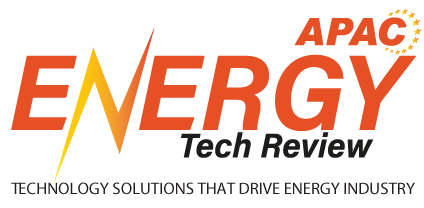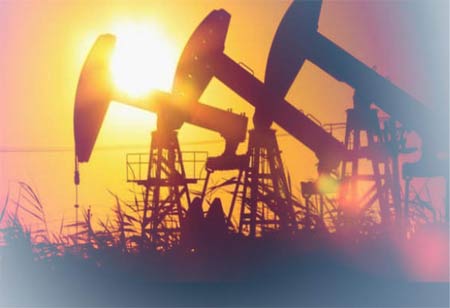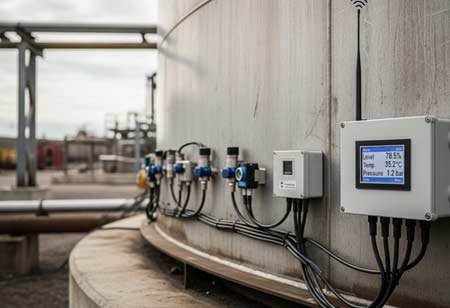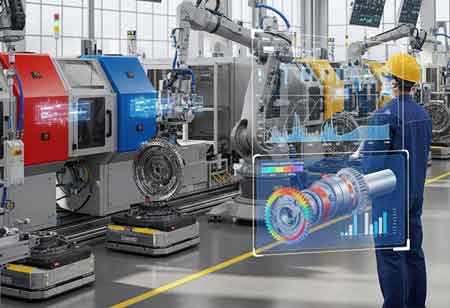CLOSE
Specials
I agree We use cookies on this website to enhance your user experience. By clicking any link on this page you are giving your consent for us to set cookies. More info
Be first to read the latest tech news, Industry Leader's Insights, and CIO interviews of medium and large enterprises exclusively from Energy Tech Review
Thank you for Subscribing
Vertical AI and the Reinvention of Canadian Energy
The Canadian energy sector is transforming through specialized Vertical AI solutions, enhancing efficiency, safety, and environmental stewardship across all segments of the industry.

By
Energy Tech Review | Wednesday, September 10, 2025
Stay ahead of the industry with exclusive feature stories on the top companies, expert insights and the latest news delivered straight to your inbox. Subscribe today.
The Canadian energy sector, a foundational element of both the national economy and global markets, is undergoing a profound transformation driven by the advanced application of artificial intelligence, rather than through new resource discoveries or traditional engineering breakthroughs. This paradigm shift is characterized by a transition from general-purpose, horizontal AI tools towards highly specialized "Vertical AI" solutions, signifying the evolution of AI from a theoretical concept to a practical, value-generating force. Unlike broad platforms offering generalized capabilities, Vertical AI is tailored to the distinct requirements of a specific industry. It is predicated on domain-specific datasets, imbued with the complex physics and technical lexicon pertinent to the sector, and engineered to address highly particular challenges. Within Canada’s multifaceted energy landscape—encompassing the oil sands of Alberta, the hydroelectric dams of Quebec, and the wind farms of Ontario—this specialization facilitates systems capable of interpreting seismic data, optimizing pipeline pressure telemetry, and refining grid frequency modulation with unprecedented precision. It is precisely this depth of expertise, rather than breadth of application, that is catalyzing measurable impact and redefining the trajectory of Canadian energy.
From Subsurface to the Switch: A Value Chain Reimagined
The influence of Vertical AI is being felt across the entire energy value chain, creating pockets of hyper-efficiency and unlocking new predictive capabilities that were previously unattainable.
In the upstream sector, focused on exploration and production, these intelligent systems are revolutionizing how resources are identified and extracted. AI models, meticulously trained on decades of geological surveys, seismic imaging, and well log data, are now able to identify promising new reserves with a much higher degree of accuracy. This significantly enhances the efficiency of exploration capital. Beyond discovery, these systems are optimizing the drilling process itself. By analyzing real-time sensor data from the drill bit, specialized algorithms can make micro-adjustments to pressure and orientation, leading to faster, safer, and more cost-effective drilling operations. Production is similarly enhanced, with predictive models forecasting well output and identifying potential equipment malfunctions before they lead to costly downtime.
Moving to the midstream segment, which encompasses the vast network of pipelines and transportation logistics, Vertical AI is becoming an indispensable tool for asset integrity and operational efficiency. Intelligent monitoring systems continuously analyze data from acoustic sensors, aerial drones, and in-line inspection tools. These AI-powered platforms can detect subtle anomalies that may indicate potential leaks or structural weaknesses, enabling proactive maintenance and bolstering environmental stewardship. On the logistics front, sophisticated algorithms are optimizing the flow of resources through complex pipeline networks, ensuring that supply consistently and efficiently meets demand across the country.
In the downstream sector, including refining and processing, the impact is centered on plant optimization and predictive maintenance. Refineries are incredibly complex environments with thousands of interconnected variables. Vertical AI systems can analyze this torrent of data to fine-tune chemical processes in real-time, maximizing the yield of high-value products while minimizing energy consumption and emissions. Furthermore, these platforms excel at predicting equipment failure. By learning the unique operational signature of every pump, valve, and compressor, the AI can forecast a potential breakdown weeks in advance, allowing maintenance to be scheduled during planned shutdowns and dramatically reducing unplanned outages.
Powering the Future: Renewables and Grid Modernization
Perhaps the most dynamic application of Vertical AI is within Canada’s rapidly growing renewable energy sector and its corresponding electrical grid. The intermittent nature of wind and solar power has long been a hurdle for grid operators. Vertical AI addresses this directly by providing vastly improved generation forecasting. By integrating hyper-local weather data, historical performance figures, and satellite imagery, these models can predict wind and solar output with remarkable accuracy, enabling utilities to manage supply and demand more effectively.
Beyond forecasting, AI is actively optimizing the performance of renewable assets. For wind farms, intelligent systems can adjust the pitch of individual turbine blades in real-time to capture the maximum amount of energy from changing wind patterns. For solar installations, similar systems can control tracking to follow the sun’s path with perfect precision.
This intelligence extends to the national power grid itself. AI-powered grid management platforms are creating a more resilient, responsive, and efficient electrical system for all Canadians. These systems can forecast electricity demand on a granular, neighbourhood-by-neighbourhood basis, ensuring power is generated and routed efficiently. In the event of a fault, such as a downed power line, AI can instantly re-route electricity to minimize the scope and duration of the outage, creating a self-healing characteristic that enhances reliability for consumers and industries alike.
The Canadian Advantage
Canada is uniquely positioned to lead this technological revolution. The nation boasts a rare and powerful combination: a world-class energy industry with deep, multi-generational domain expertise, and a globally recognized ecosystem of artificial intelligence research and development. This confluence creates a fertile breeding ground for the development of potent Vertical AI solutions. The data generated by decades of energy operations provides the rich, high-quality fuel needed to train these specialized models. In contrast, the nation’s AI talent provides the intellectual horsepower to build them.
The ascendance of Vertical AI within Canada's energy sector is no longer an emerging trend; it has become a foundational element of the industry's contemporary and future landscape. It signifies a transition beyond exploratory phases toward profound, operational integration. Through the use of intelligent systems adept at the specific language of the energy sector, Canadian entities are enhancing efficiency, strengthening safety, and improving their environmental stewardship. As these technologies mature, they will become increasingly integrated into pivotal decision-making frameworks, culminating in enhanced operational autonomy, improved predictive capabilities, and a more robust energy infrastructure. This specialized technological surge is solidifying Canada's position not merely as an energy superpower, but as a global vanguard in the intelligent and sustainable administration of vital resources.

Copyright © 2025 Energy Tech Review. All rights reserved






